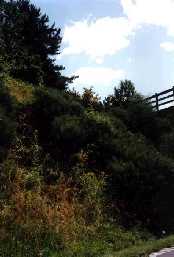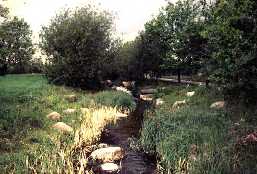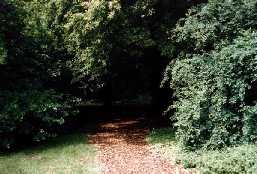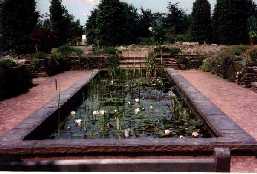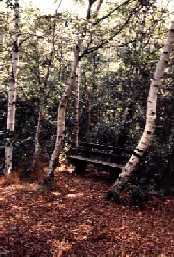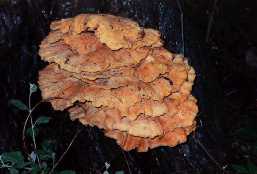Participants
Findings: Stefan Bürger, John Koeck, Fritz Oßke
Detection: John Koeck, Erhard Ludwig, Fritz Oßke
Taxonomic postprocessing: Stefan Bürger, John Koeck, Erhard Ludwig
Photos: Freilandlabor Britz e.V., John Koeck
Pictures and micro-graphs: Erhard Ludwig
Dokument and maps: Stefan Bürger
Additional botanic information: Berliner Park und Garten Entwicklungs- und Betriebs-GmbH
Base for taxonomic postprocessing
A.Schilling / Dr.D.Seibt: Ökologische Pilzkartierung 2000 Version 3.0, Program of the «Deutschen Gesellschaft für Mykologie (DGfM)»
Literature
B&K: Breitenbach & Kränzlin-Pilze der Schweiz (Band 1-4)
Bres.: Bresadola-Iconographia Mycologica (1-26)
Ce./Ce.(neu): Bruno Cetto-Der große Pilzführer / Enzyklopädie der Pilze (Band 1-4)
Ce.: Bruno Cetto-I funghi dal vero (vol.5-7)
Dä. / Dä.(neu): Rose Marie Dähncke-700 Pilze in Farbfotos / 1200 Pilze in Farbfotos
Lge.: Jakob E. Lange-Flora Agaricina Danica (Band 1+2)
Md.: Marchand-Champignons du Nord et du Midi (1-9)
MHK: E. Michael/B. Hennig/H. Kreisel-Handbuch für Pilzfreunde (Band 1-6)
---: Machiel E. Noordeloos-Fungi Europaei, Entoloma s.l.
Ph.: Roger Phillips-Der Kosmos-Pilzatlas
R&H: S. Ryman/I. Holmåsen-Pilze
J.Schff.: J. Schäffer-Die Pilze Mitteleuropas,Band III,Russula-Monographie,Vaduz 1979
---: Johann Stangl-Die Gattung Inocybe in Bayern
Recommended additional literature:
Ascomycetes: I&H Schmid-Ascomyceten im Bild
Cortinarius: Brandrud/Lindström/Marklund/Melot/Muskos-Cortinarius Flora Photographica
Marasmius: V. Antonin/M.E.Noordeloos-A Monograph of Marasmius,Collybia and related genera in Europe (part 1)
Russula: A. Einhellinger: Die Gattung Russula in Bayern
Description of the project
Included are Asco-, Basidio- and Myxomycetes as defined by Kreisel in Sydowia 36 (1983) p.154-164 . Not included are Pyrenomycetes.
Nomenclature
Nomenclature follows the «International Code of Botanic Nomenclature» (ICBN) in the version accepted during the international botanic congress in Sydney 1981. The botanic and german names follow the recommendations of the DGfM (based on their mycological registration program «Pilzkartierung 2000») rsp. the publications of Jahn, Kreisel, Moser and Ricken.
Additional hints on finding places and references
The list "Besondere Funde" shows species remarkable for this area which are catgorized as described in the "Roten Liste der gefährdeten Großpilze in Deutschland" (red list) of the DGfM (Deutsche Gesellschaft für Mykologie e.V.) and the NABU (Naturschutzbund Deutschland e.V.) with the following categories:
R (rare, latent in danger), 3 (in danger), 2 (in higher danger), 1 (in highest danger to be lost), 0 (lost).
Hints to the distribution (1st finding/ very seldom/ seldom in Germany/ North Germany/ South Germany/ Brandenburg) are taken from the publications made by Kriegelsteiner («Verbreitungsatlas der Großpilze in Deutschland» pt. 1A (1991), 1B (1991) und 2 (1993)) and Kreisel («Pilzflora der DDR» (1986)).
"Ort:" gives hints to finding places (substrate) and time.
"Ref.:" gives hints to literature describing this specie (possibly under another name now known to be a synonyme): In the iconographies of Bresadola (Bres.), Breitenbach&Kränzlin (B&K), Cetto (Ce. / Ce.(neu)), Dähnke (Dä. / Dä. (neu)), Lange (Lge.), Marchand (Md.), Phillips (Ph.), Ricken (Ri.), Ryman&Holmåsen (R&H) and the "Handbuch für Pilzfreunde" by Michael, Hennig und Kreisel (MHK).
"Exs.:" shows the presence of Exsikkates,
"Mak.:" and "Mik.:" describe macroscopic and microscopic descriptions of the species.
Introduction (for more information see the german part)
During the years 1979 to 1985 an area of flat fields and parts of a graveyard (app. 100 ha size) in the southern part of Berlin between the city districts Tempelhof (Mariendorf) and Neukölln (Britz/ Buckow) was rebuilt to the park of the «Bundesgartenschau 1985» with a landscape of hills, lakes, meadows and different plantations with flowers, bushes and trees. Of special interest may be the influence of the usage of plants and materials not common for this area.
A list of planted bushes and trees is to be found under "Flora".
Flower plantations are changing every year, therefore no such list is included.
We also cannot give information to details e.g. where ground and other materials (e.g. cutted wood from South Germany) come from. We assume that app. 20 to 30 % of the Mushrooms found in this area are more or less uncommon in this region, they probably have been taken to this area "unfortunately" with the other plants or "dead" material. In our opinion there is a good chance of observing the mycological development in this area during the years.
Description of the park (for more information see the german part)
The park area splits in ~ 20% lakes, ~ 10% parts sealed (with paths, playground, buildings etc.), ~ 40% meadows and flower plantations and ~ 30% bushes and trees.
